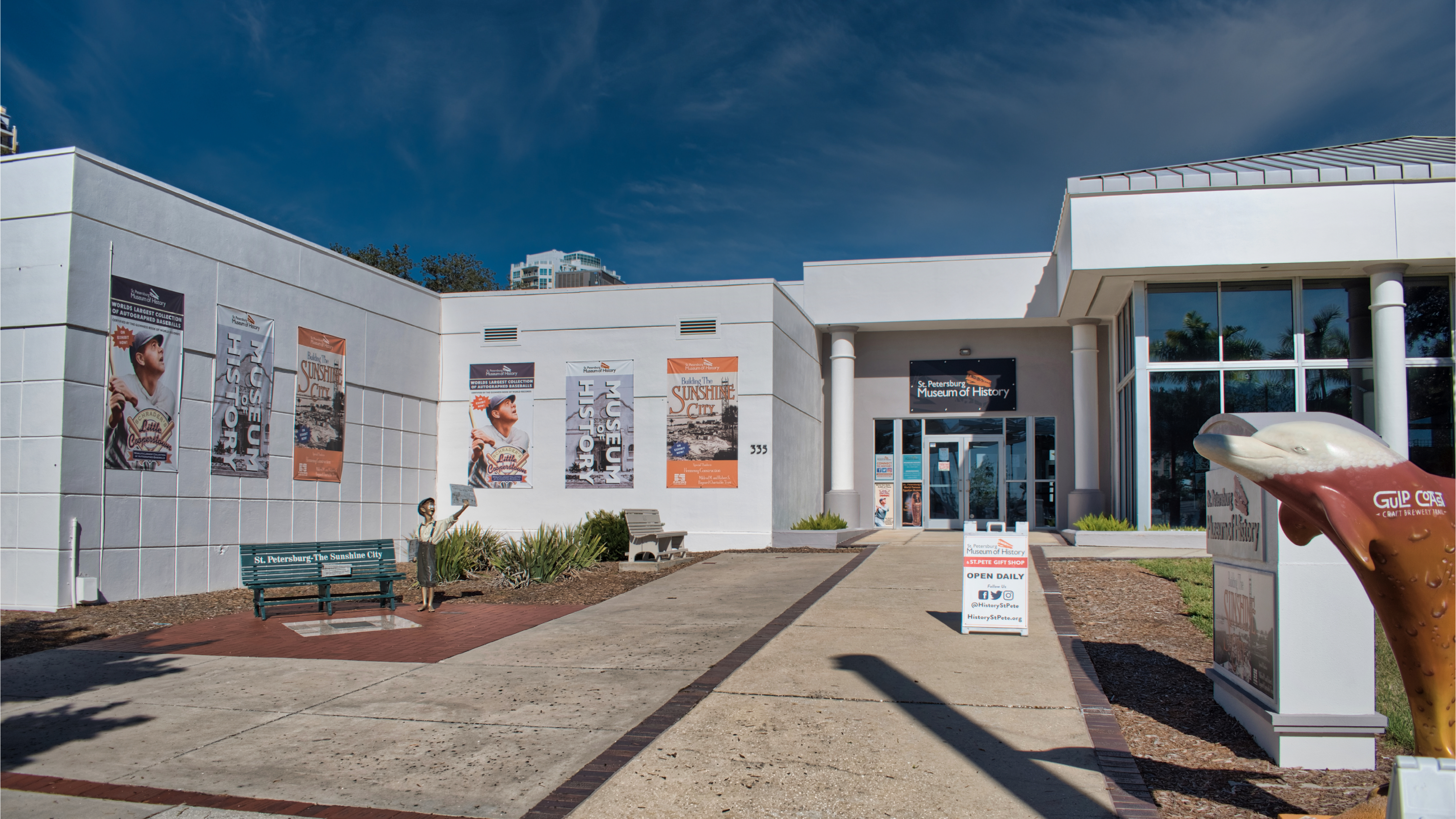Albert Whitted:
More Than An Airport

Born in 1893 on Valentine’s Day, James Albert Whitted would become one of St. Petersburg’s most famous pilots. Known as Albert to all, he was born and raised in St. Pete during its first real growth spurt. The city had been platted just 5 years before, shortly after the first train had arrived in this tiny village.
As Albert grew, and the city along with him, his attention went from teaching the drum corps while in high school to racing motorcycles for a short period at age17 in New Haven, Connecticut. While there, Albert developed a passion for aviation. His love for speed and engines prompted him to open the first Indian Motorcycle shop in St. Petersburg.
Certainly, he was a part of the 3,000 St. Pete spectators that stood on the water’s edge to watch the historic first commercial flight of Tony Jannus on January 1, 1914. Three years later, he enlisted in the aviation corps. First Lieutenant Whitted was one of the first 250 pilots licensed by the United States Navy. His pilot number was number 179.
By 1918, Lt. Whitted was chief flying instructor at the naval base in Pensacola, Florida. Shortly thereafter, the aviators’ talents and skills made him the overseer of all aviation maneuvers in Guantanamo Bay, Cuba.
Upon his discharge from the Navy in 1919, Albert and his new bride spent their time between Pensacola and St. Pete. By the end of the year, he returned to the Sunshine City with his custom-built plane “Bluebird,” to do commercial flying. For the next few years, he flew thousands of passengers for sightseeing excursions over the city, helped capture countless aerial photographs, and taught flying lessons for the brave at heart.
In 1921, Albert constructed his next seaplane, the “Falcon.” He later returned to Pensacola to perform some upgrades to his aircraft’s engine and wings. On August 19, 1923, tragedy struck when flying off the coast with four passengers, the propeller of the “Falcon” came loose and ripped through the fuselage and control wires. Just five minutes after takeoff and roughly 200 feet above the water, The “Falcon” plummeted into the choppy waters. All aboard perished.
While it is true that in 1914 the Jannus Brother’s flew their historic airline services for a few months in St. Pete, it was Albert Whitted and his flying machines that surely inspired many more residents to reach for their dreams and attempt the impossible. And local leaders recognized this.
Shortly after Albert Whitted’s passing, the city began construction of a downtown airport. The small one runway municipal airport would be named in his honor. Today the improved airport is a bustling reminder of what man, might, and machine can achieve.
To really feel the magic of flight, visit the park next to the airport. Take the kids or your favorite companion, have a picnic, and watch old biplanes and million-dollar private jets take flight and soar into clouds above Tampa Bay. It truly is a remarkable sight.
Access our St. Pete Stories first in ST. PETE IN A SNAP by signing up for our Newsletter!



